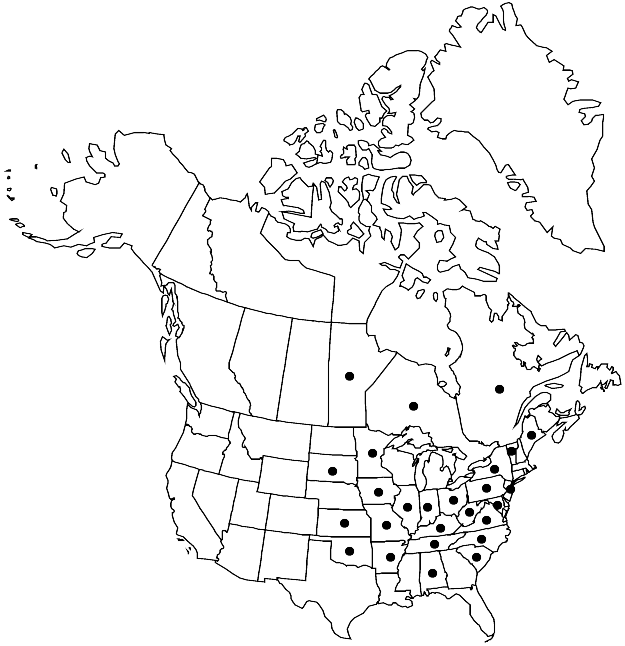Orthotrichum strangulatum
Prodr. Aethéogam., 81. 1805.
Plants 0.4–1 cm. Stem-leaves stiff, erect when dry, ovate to oblong-lanceolate, 2–2.7 mm; margins thick to near apex, entire; apex acute to ± narrowly obtuse; basal laminal cells quadrate to rectangular, walls thin, not nodose; distal cells 7–12 µm, 1-stratose, occasionally with 2-stratose streaks, papillae 2 or 3 per cell, conic, sometimes 2-fid, size moderate; marginal cells 2–3 (–7) -stratose. Specialized asexual reproduction absent. Sexual condition gonioautoicous. Seta to 0.8 mm. Capsule immersed to 1/2 emergent, oblong-ovate to oblong, 1.1–1.8 mm, distinctly 8-ribbed, constricted below mouth when dry; stomata immersed; peristome single, rarely double; prostome present; exostome teeth 16, incurved-erect to spreading-recurved, granulose or reticulate-papillose; endostome segments absent or rarely 8, not well developed, of 1 row of cells, short, smooth. Calyptra oblong-conic, smooth, hairy, hairs papillose. Spores 12–16 µm.
Habitat: Dry, exposed, calcareous or dolomite bluffs, rock faces
Elevation: low to moderate elevations (150-700 m)
Distribution

Man., Ont., Que., Ala., Ark., Ill., Ind., Iowa, Kans., Ky., Maine, Md., Minn., Mo., N.J., N.Y., N.C., Ohio, Okla., Pa., S.C., S.Dak., Tenn., Vt., Va., W.Va.
Discussion
The Orthotrichum strangulatum complex contains three species, all endemic to eastern and central North America. These three species all occur as blackish, dense tufts on dry calcareous rock and have similar sporophytes with immersed, oblong, deeply 8-ribbed capsules that are strongly constricted below the mouth when dry. The stomata are found in the distal capsule nearly covered by subsidiary cells, and the endostome segments are fragile. Although often described as one polymorphic species, here plants with 1-stratose, revolute margins are recognized as O. lescurii, those with 1-stratose, plane margins as O. parvulum, and those with multistratose leaf margins as O. strangulatum.
Selected References
None.